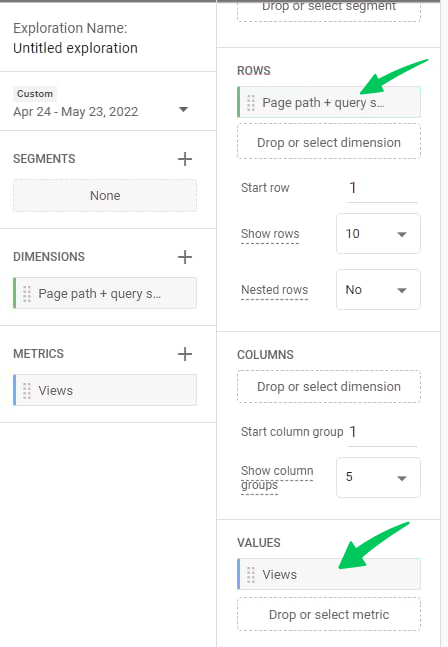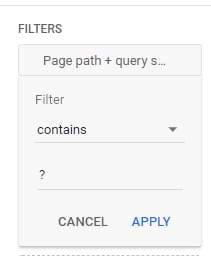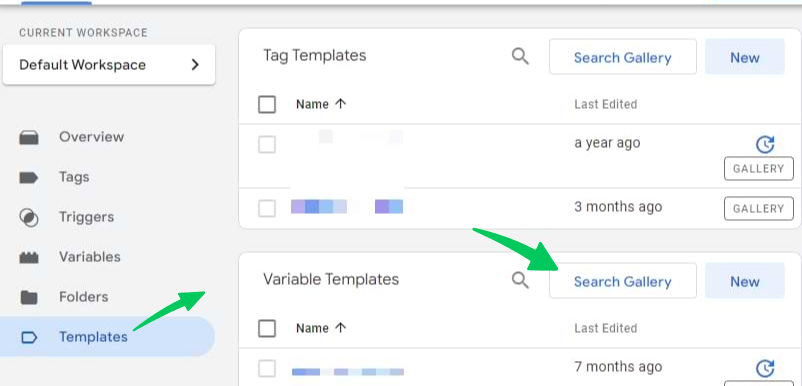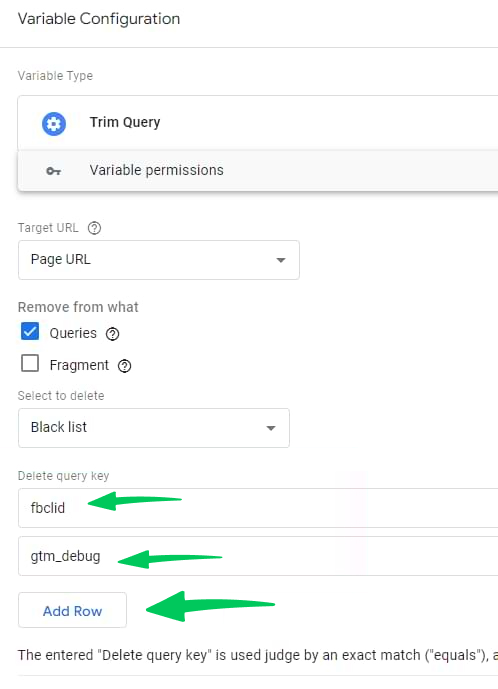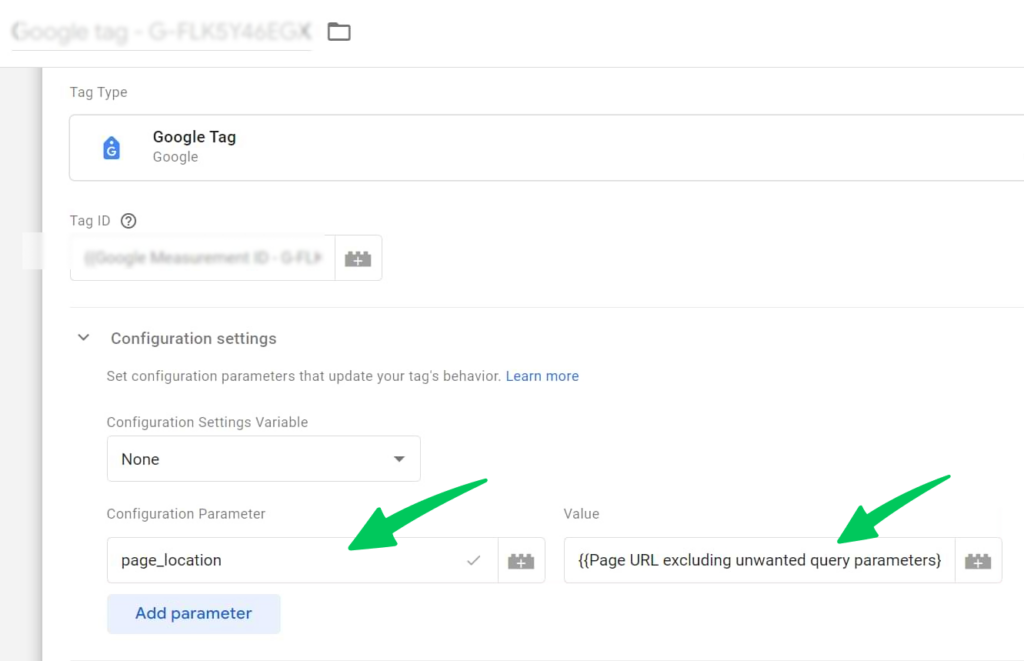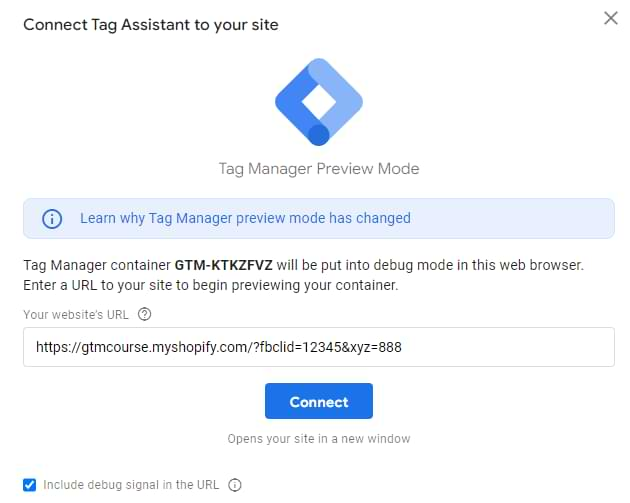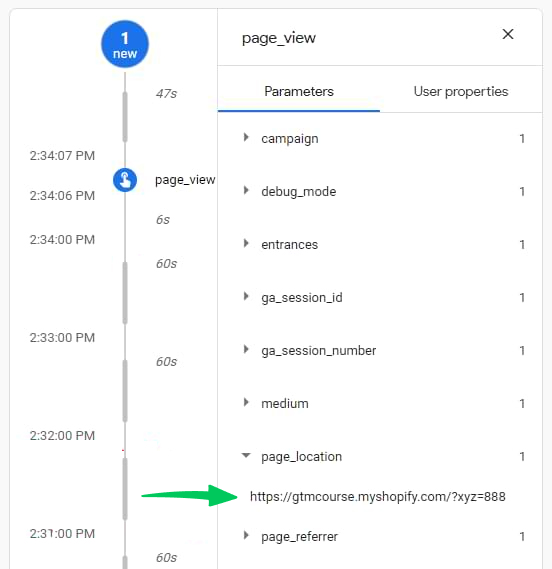
How to Exclude URL Query Parameters in Google Analytics 4
Are you looking for ways to exclude URL query parameters in Google Analytics 4? If so, you are in the right place.
In Universal Analytics (GA3), this was a built-in feature, but in GA4, it requires a workaround.
URL query parameters, which are bits of information attached to the end of a URL after a question mark (?), play a significant role in how websites function. They pass data between pages, track marketing campaigns, and personalize user experiences. However, when it comes to Google Analytics 4 (GA4), these parameters can create a bit of a mess. They can clutter your reports, skew your data, and even pose privacy concerns.
That’s why learning how to exclude URL query parameters in Google Analytics 4 is a must for anyone serious about data analysis.
In this guide, we will talk in detail what is URL query parameters and how to exclude URL Query Parameters in GA4.
Exclude URL Query Parameters (TOC):
What are URL Query Parameters?
A URL query parameter is a way to pass information to a website via the URL. It consists of a key-value pair, separated by an equals sign (=), and multiple parameters are separated by ampersands (&). Here’s a simple example:
In this URL:
- category=electronics is one parameter
- brand=apple is another
These parameters might tell the website to display products in the “electronics” category from the brand “Apple”.
Why Exclude URL Query Parameters in GA4?
There are several compelling reasons to exclude URL query parameters in Google Analytics 4:
- Cleaner Reports: Too many parameters can create a long list of unique URLs in your reports, making them difficult to read and analyze. Excluding unnecessary parameters streamlines your data.
- Accurate Data: Some parameters, like those used for tracking marketing campaigns (e.g., utm_source, utm_medium), can create duplicate pageviews. Excluding them ensures you’re measuring actual user behavior, not marketing clicks.
- Privacy Concerns: Certain parameters might contain personally identifiable information (PII). Excluding them helps you comply with privacy regulations and protect user data.
- Improved Site Search Analysis: If you have site search functionality, excluding the search query parameter (q or similar) prevents each unique search term from creating a new pageview, giving you a clearer picture of overall search behavior.
Now that we understand the importance of excluding URL query parameters let’s explore the methods for achieving this in GA4.
Is GA4 Data Redaction Feature Enough to Remove URL Query Parameters?
The answer is no.
The GA4 Data Redaction feature falls short because, while it masks unwanted URL query parameters, it doesn’t merge them into a single, clean URL in your reports. This means that even after redaction, variations of the same page with different query parameters will still appear as separate entries, cluttering your data and making analysis less straightforward.
GA4 data redaction method merely hides the sensitive information within the query parameters, but it doesn’t address the underlying issue of having multiple URLs representing the same page, which is important for accurate tracking and reporting.
That’s why we’ll be following the below methods to exclude URL Query Parameters in Google Analytics 4.
How to Exclude URL Query Parameters in Google Analytics 4
GA4 offers a couple of flexible ways to exclude URL query parameters. Let’s explore them in detail.
Step 1: Identify URL Query Parameters to Exclude
The first step in cleaning up your GA4 data is to pinpoint the exact query parameters you want to get rid of. We’ll use a custom report in GA4’s Explore section to do this.
- Create a Custom Report:
- Navigate to Explore >> Blank to start a new report.
- Add Dimensions and Metrics:
- Locate the Page path + query string (or Page location) dimension and click the Plus icon to import it.
- Similarly, import the Views metric.
- Double-click on both the dimension and the metric to add them to the “Rows” and “Values” sections of the Variables tab.
- Filter for URLs with Query Parameters:
- In the “Filters” section, set up a filter with the condition: Page Path + Query strings contains ?. This ensures the report only shows URL Query Strings that have at least one query parameter.
- Analyze and List Parameters:
- You now have a report listing URL Query Strings having query parameters.
- Select to show more rows if needed.
- Carefully examine the URLs and identify the query parameters you don’t want to see in your GA4 reports.
- Make a list of these parameters – we’ll use this list later in the process.
Completing these steps will give you a clear understanding of which query parameters are cluttering your data, and you can proceed to exclude them using Google Tag Manager.
Step 2: Implement the Custom Template in GTM
Now that you have a list of unwanted query parameters, let’s use Google Tag Manager (GTM) to exclude them.
- Import the Custom Template:
- Log in to your GTM container and navigate to Templates.
- Click on Search Gallery in the Variable Templates section.
- Search for the template named “Trim Query,” created by Ayudante.
- Click Add to Workspace and then Add to import it into your container.
- Create a Variable to Exclude Query Parameters:
- Go to Variables >> New >> Variable Configuration.
- Select “Trim Query” as the variable type.
- Set Page URL as the Target URL – this is the URL the variable will clean up.
- Leave other settings as default.
- Important: This variable doesn’t change the actual URL visitors see; it creates a cleaned version for GA4.
- Now, list all the query parameters you identified earlier, one per row, in the designated section.
- Save the variable with a descriptive name like “Page URL excluding unwanted query parameters”.
- Update GA4 Configuration and Event Tags:
- GA4 automatically tracks page_location, but we’ll override this.
- In your GA4 configuration tag, add a new parameter, page_location, and set its value to the custom variable you just created.
- Save the tag.
- For all GA4 Event tags:
- You can manually add the page_location parameter with the custom variable to each tag.
- Recommended: Create a GA4 event settings variable to manage the page_location parameter centrally. Then, use this settings variable in all your GA4 event tags for easier maintenance.
By implementing these steps, you’re instructing GTM to send a cleaned version of the Page URL to GA4, ensuring your reports are free of the unwanted query parameters you identified.
Step 3: Verify Your Setup
It’s necessary to test your implementation before going live to ensure everything is working as expected.
- Enable GTM Preview Mode:
- Click the Preview button in the top right corner of the GTM interface.
- Enter Test URL:
- In the Preview window, enter your website’s URL along with:
- Several query parameters you’ve excluded (e.g., fbclid, mc_cid).
- You want to keep at least one parameter (e.g., utm_campaign).
- Separate all parameters with &.
- Example: yoursite.com?fbclid=12345&utm_campaign=summer_sale&xyz=888
- Click Connect.
- Check GA4 DebugView:
- Once your GA4 tags have fired, go to Google Analytics >> Admin >> DebugView.
- Locate your device in the list.
- Examine the most recent events.
- Verify that the page_location value in these events does NOT contain the excluded parameters but DOES include the parameters you want to keep.
- Publish Changes:
- If everything looks good in DebugView, you’re ready to go live!
- Click the SUBMIT button in GTM and follow the prompts to publish your container.
Remember:
- Testing is essential to catch any errors before they impact your GA4 data.
- If you encounter issues, double-check your variable configuration and tag settings.
- If you’re still having trouble, consider contacting a GTM expert for assistance.
Bonus: Analytify For WordPress Users
Join 50,000+ beginners & professionals who use Analytify to simplify their Google Analytics!
Think of Analytify as your friendly Google Analytics assistant inside your WordPress dashboard. It takes all that complex GA4 data into simple visuals that anyone can understand.
What it Does for WordPress
- Easy Setup: You don’t need to be a tech expert. With a few clicks, Analytify is connected to your WordPress site, pulling in all your GA4 data.

- See Stats on Your Dashboard: Get a quick snapshot of how your site’s doing right when you log in to WordPress. No need to jump between different tools.
- eCommerce Tracking: If you sell stuff online, Analytify can track your sales, popular products, and even where shoppers drop off.
- No More Code Headaches: You don’t need to mess with any complicated tracking code. Analytify handles it all behind the scenes.
In short, Analytify makes Google Analytics 4 easy and accessible, even if you’re not a data expert. It’s like having your own personal analytics team, helping you make smarter decisions about your WordPress site.
FAQs: URL Query Parameters
Q: What are URL query parameters, and why should I exclude them?
URL query parameters are bits of information added to the end of a URL after a question mark (?). They often track things like campaign sources, user IDs, or other data useful for external tools. However, they can clutter your Google Analytics 4 (GA4) reports by creating multiple versions of the same page. Excluding unnecessary parameters helps you maintain clean and actionable data.
Q: How do I exclude URL query parameters in GA4?
GA4 doesn’t have a built-in feature for this yet. You’ll need to use Google Tag Manager (GTM) and a custom template called “Trim Query”. This template allows you to create a variable that removes specific query parameters from the page_location sent to GA4.
Q: Can I use GA4’s data redaction feature instead?
Data redaction can hide sensitive information, but it doesn’t solve the issue of duplicate URLs caused by query parameters. Redacted parameters still result in separate entries in your reports.
Q: How do I identify which query parameters to exclude?
Use a custom report in GA4’s Explore section. Filter for URLs containing query parameters and analyze the results to identify the ones you don’t need for your GA4 analysis.
Q: What are some common query parameters I might want to exclude?
Some popular ones include:
fbclid (Facebook)
mc_cid & mc_eid (Mailchimp)
_hsenc & __hstc (HubSpot)
igshid (Instagram)
gclid (Google Ads)
Q: Can I exclude all query parameters except specific ones?
Yes, the “Trim Query” template has a whitelist feature. You can list the parameters you want to keep, and all others will be automatically excluded.
Q: Will excluding query parameters affect my historical data?
No, this change only applies to future data collected after implementing the GTM solution.
Q: I’m using GTAG, not GTM. Can I still exclude query parameters?
Yes, but it requires custom code. Your developer will need to modify the gtag implementation to send a cleaned page_location to GA4.
Final Thoughts
In this article, we learned step by step how to exclude URL query parameters in Google Analytics 4 using GTM. It helps you to declutter your reports, ensure data accuracy, and safeguard user privacy. By implementing the steps in this guide, you can effectively manage these parameters and better understand your website’s performance.
First, you need to identify the specific URL query parameters causing issues, and then you need to exclude them strategically using Google Tag Manager.
You may also like to know about GA4 Data Import (Ultimate Guide 2024).
Now, we’d like to hear from you. Are you excluding URL query parameters from your analytics reports? Share your thoughts in the comments below.




